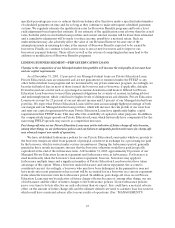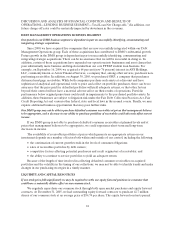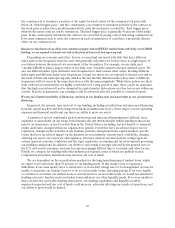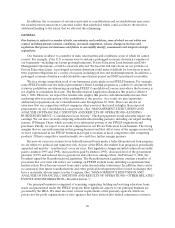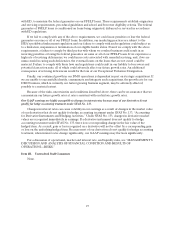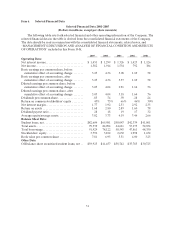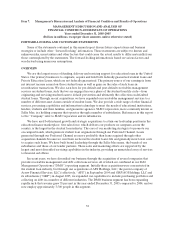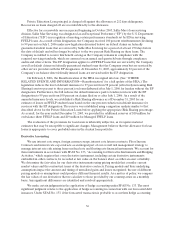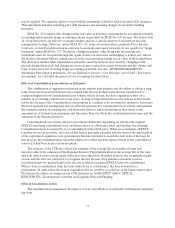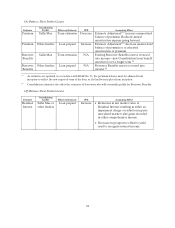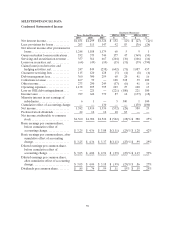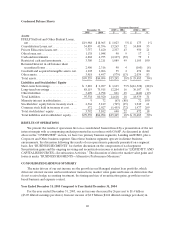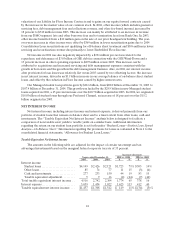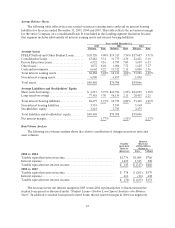Sallie Mae 2005 Annual Report Download - page 43
Download and view the complete annual report
Please find page 43 of the 2005 Sallie Mae annual report below. You can navigate through the pages in the report by either clicking on the pages listed below, or by using the keyword search tool below to find specific information within the annual report.33
In December 2004, we completed the Wind-Down of the GSE through the defeasance of all
remaining GSE debt obligations and dissolution of the GSE’s federal charter. The liquidity provided to the
Company by the GSE has been replaced primarily by securitizations. In addition to securitizations, we have
also increased and diversified our investor base over the last three years to enable us to access a number of
additional sources of liquidity including an asset-backed commercial paper program, unsecured revolving
credit facilities, and other unsecured corporate debt and equity security issuances.
We manage our business through two primary operating segments: the Lending operating segment
and the DMO operating segment. Accordingly, the results of operations of the Company’s Lending and
DMO operating segments are presented separately below under “BUSINESS SEGMENTS.” These
operating segments are considered reportable segments under the Financial Accounting Standards Board’s
(“FASB”) Statement of Financial Accounting Standards (“SFAS”) No. 131, “Disclosures about Segments
of an Enterprise and Related Information,” based on quantitative thresholds applied to the Company’s
financial statements.
CRITICAL ACCOUNTING POLICIES AND ESTIMATES
Managment’s Discussion and Analysis of Financial Condition and Results of Operations discusses our
consolidated financial statements, which have been prepared in accordance with generally accepted
accounting principles in the Unites States (“GAAP”). The preparation of these financial statements
requires management to make estimates and assumptions that affect the reported amounts of assets and
liabilities and the reported amounts of income and expenses during the reporting periods. We base our
estimates and judgments on historical experience and on various other factors that we believe are
reasonable under the circumstances. Actual results may differ from these estimates under varying
assumptions or conditions. Note 2 to the consolidated financial statements, “Significant Accounting
Policies,” includes a summary of the significant accounting policies and methods used in the preparation of
our consolidated financial statements.
On an ongoing basis, management evaluates its estimates, particularly those that include the most
difficult, subjective or complex judgments and are often about matters that are inherently uncertain. These
estimates relate to the following accounting policies that are discussed in more detail below: application of
the effective interest method for loans (premiums, discounts and Borrower Benefits), securitization
accounting and Retained Interests, provisions for loan losses, and derivative accounting. Also, as part of
our regular quarterly evaluation of the critical estimates used by the Company, we have updated a number
of estimates to account for the increase in Consolidation Loan activity.
Premiums, Discounts and Borrower Benefits
For both federally insured and Private Education Loans, we account for premiums paid, discounts
received and certain origination costs incurred on the origination of student loans in accordance with
SFAS No. 91, “Accounting for Nonrefundable Fees and Costs Associated with Originating or Acquiring
Loans and Initial Direct Costs of Leases.” The unamortized portion of the premiums and the discounts is
included in the carrying value of the student loan on the consolidated balance sheet. We recognize income
on our student loan portfolio based on the expected yield of the student loan after giving effect to the
amortization of purchase premiums and accretion of student loan discounts, as well as the impact of
Borrower Benefits. In arriving at the expected yield, we must make a number of estimates that when
changed must be reflected as a cumulative catch-up from the inception of the student loan. The most
sensitive estimate for premium and discount amortization is the estimate of the Constant Prepayment Rate
(“CPR”) which measures the rate at which loans in the portfolio pay before their stated maturity. The CPR
is used in calculating the average life of the portfolio. A number of factors can affect the CPR estimate
such as the rate of Consolidation Loan activity and default rates. Changes in CPR estimates are discussed
in more detail below.


